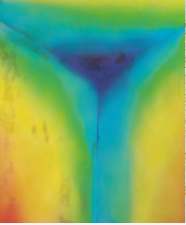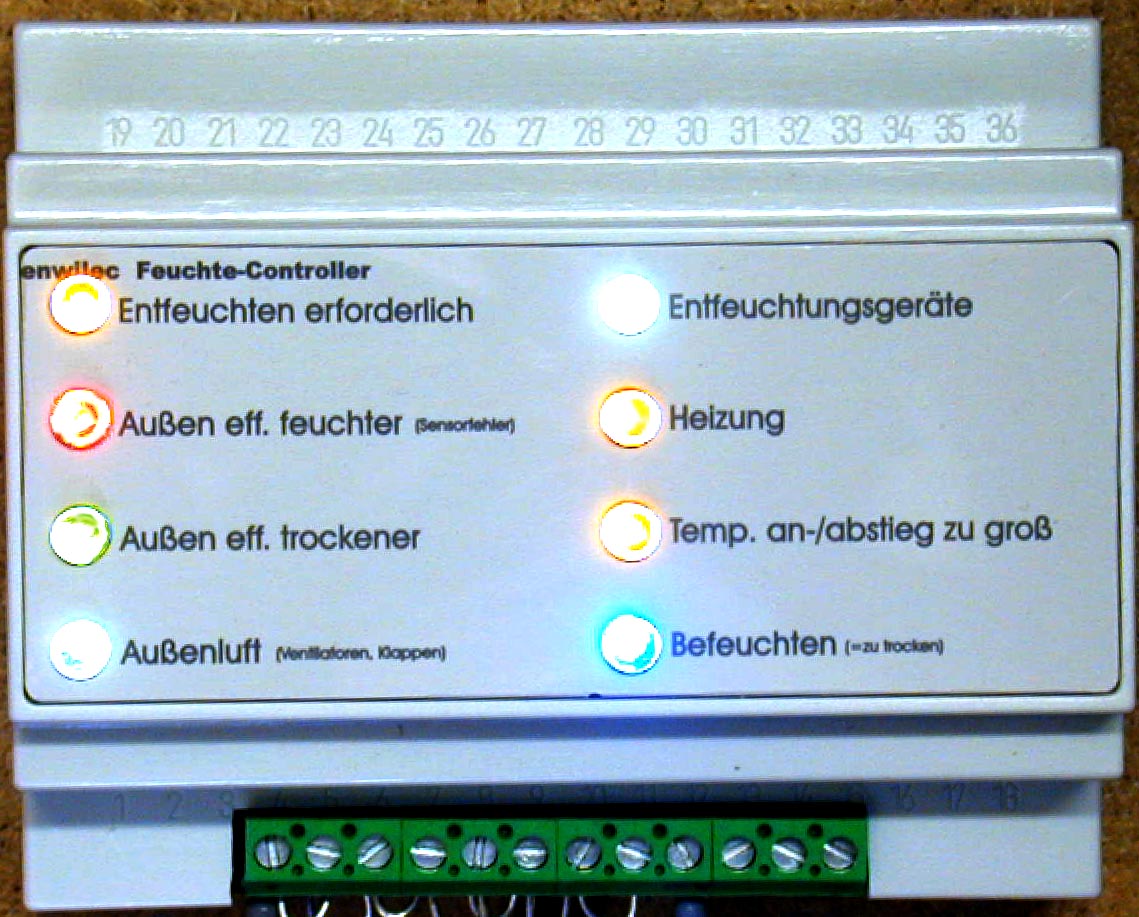Dehumidifying system with ECTeFF Climate-Controller for Humidity
Climate-Controller for Humidity in Churches
Protection against mould and humidity damages
even with increased requirements
The humidity protection is divided into 2 areas according to the origin of the humidity:
- Humidity from the earth
- Humidity from the air
1) Humidity from the earth
If the humidity comes from the earth, then construction measures are necessary.
2) Humidity from the air
Air is everywhere, and it always has humidity.
Whether this humidity is harmless or a danger cannot be judged even with hygrometers alone.
Humidity from the air has an effect on the building fabric and on the fixtures.
and must therefore always be taken into account.
Humidity protection of the air is always necessary!
This protection is the subject of these internet pages.
Increased requirements
If one of these characteristics is present,
then increased and special requirements are present:
- Differences in temperatures, temporally or spatially
- Sporadically heated and/or rooms in contact with the ground
- Building fabric not recognisable / mixed / historic
- Rapid weather changes (humidity and temperature) are a danger
- Valuable building fabric and / or inventory must be protected
- and so on...

Backgrounds
Both the building user and the professional face the problem:
- Humidity changes with temperature
- The limit value of the risk humidity is variable, spatially and temporally
- Temperature differences, spatial or temporal, are a danger
- Humidity causes mould and very expensive damage
- A seemingly harmless humidity can cause expensive damage
- The risk is variable and not detectable by usual means
Attention!
At certain times, seemingly harmless outdoor air is a danger!At certain other times, however, outdoor air can dehumidify very well!
The solution:
Always dehumidify and keep dry as needed!
- Automatic control and regulation of humidity
- A technology with a system and with competence in moisture physics
- A concept with attention to the risky places
An ECTeFF humidity controller knows the requirements and can regulate the humidity appropriately.
Features (depending on equipment):
- Constant control of humidity.
- Safe dehumidifying and keeping dry.
- Control of planned or existing technology.
- Coupling of several dehumidification techniques / stages.
- Achieving equity of need: Operating only when needed
- Cost reduction.
- For sure: Always enough, never too much.
- Avoidance of very expensive damages.
Applications also for special requirements in:
- Sporadically heated buildings or buildings in contact with the ground
- Historic buildings
- Churches and other places of worship
- Buildings with increased requirements for the protection of the building fabric and inventory
- Curtain-type, rear-ventilated façades
- Cellars
- Winter garden
- Sports halls
- Club homes
- and similar buildings where temperatures are not uniform spatially or temporally
An ECTeFF humidity controller is far more than:
- a humidity control
- an absolute humidity controller
- a dew point control
- a mould guard
- a ventilation light
Example of a status display:
(labelling in the language of your choice)
